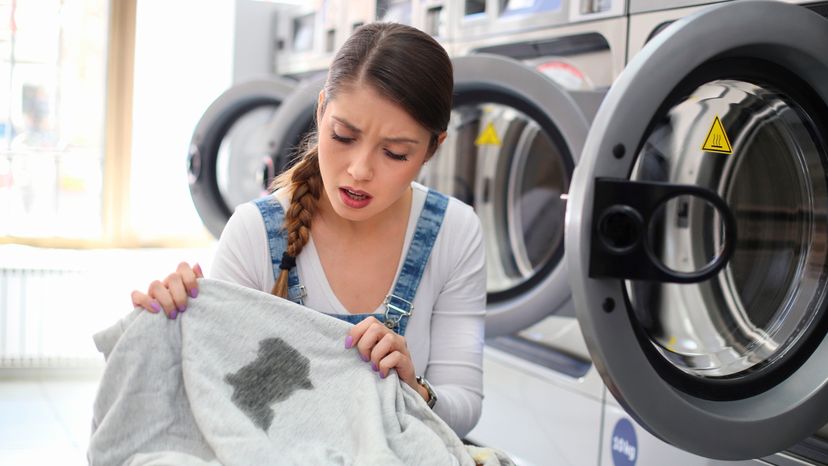
Advertisement

Advertisement
Acetate, Fiberglass, Rayon,
Silk, Triacetate, Wool
Advertisement
Sponge (the method of using light strokes with a dampened pad working outward from the center of the stain) the area with water. Then apply a wet spotter and a few drops of white vinegar. Cover with an absorbent pad dampened with the wet spotter. Let it stand as long as any stain is being removed. Change the pad as it picks up the stain. Keep stain and pad moist with the wet spotter and vinegar. Repeat until no more stain is removed. If any remains, soak in a solution of 1 quart warm water, 1/2 teaspoon liquid detergent, and 1 tablespoon white vinegar for 15 minutes. Rinse with water.
Remove Cough Syrup Stains From:
Acrylic Fabric, Spandex
Sponge the area with water. Then apply a wet spotter and a few drops white vinegar. Cover with an absorbent pad dampened with the wet spotter. Let it stand as long as any stain is being removed. Tamp (the method of bringing a brush down with light strokes on stained durable fabrics and materials) occasionally and change the pad as it picks up the stain. Flush (the method of applying stain remover to loosen staining materials and residue from stain removers) with water. If stain remains, soak in a solution of 1 quart warm water, 1/2 teaspoon liquid detergent, and 1 tablespoon white vinegar for 15 minutes. Launder as soon as possible.
Advertisement
Acrylic Plastic, Alabaster, Aluminum, Asphalt, Bamboo, Cane,
Ceramic, Glass/Tile, Cork, Glass, Linoleum, Marble, Paint/Flat,
Advertisement
Paint/Gloss, Plexiglas, Polyurethane, Stainless Steel,
Vinyl Tile, Vinyl Wallcovering
Wipe up any excess immediately as cough syrup contains not only alcohol, but food coloring that can permanently stain and damage the surface. Wipe surface with a cloth or sponge dipped in warm sudsy water. Rinse well and wipe dry.
Advertisement
Bluestone, Concrete, Flagstone, Slate
Wipe up excess spill. Wash with a solution of washing soda or detergent (never use soap) and water. Use a cloth or gentle brush. Rinse thoroughly with clear water and allow to dry.
Advertisement
Carpet/Synthetic, Carpet/Wool, Cotton, Linen,
Nylon, Olefin, Polyester
Advertisement
Sponge area with water. Apply a spot remover: Stain-X Carpet Stain Remover or Afta Carpet Stain Remover for carpeting. Then apply a wet spotter and a few drops of white vinegar (do not use vinegar on cotton and linen). Cover with an absorbent pad dampened with the wet spotter. Let stand as long as stain is being removed. Change the pad as it picks up the stain. Keep stain and pad moist with the wet spotter and vinegar. Flush with water. Repeat until no more stain is removed. If stain persists, then apply rubbing alcohol to the stain and cover with an absorbent pad dampened with alcohol. Let it stand as long as any stain is being removed. Change the pad as it picks up the stain. Keep stain and pad moist with alcohol. If stain still remains, presoak (the method of soaking in the washer or in a sink or tub before washing) in a solution of 1 quart warm water, 1/2 teaspoon liquid detergent, and 1 tablespoon white vinegar for 15 minutes, if possible. Rinse with water. Sponge with alcohol. Launder as soon as possible. For carpets, thoroughly dampen the area with solution and cover with an absorbent pad moistened with the solution. Keep covered for 30 minutes. Using absorbent pads, remove as much moisture as possible. Allow the area to thoroughly air dry.
Grout
Wipe excess immediately with a cloth dipped in warm sudsy water. If any stain remains, dip a wet toothbrush into powdered cleanser and gently scrub spot. Rinse well and wipe dry.
Advertisement
Leather, Suede
Gently remove any excess liquid. Mix a solution of mild soap in lukewarm water. Swish to create a great volume of suds. Apply only the foam with a sponge. Wipe with a clean dry cloth. If a grease stain remains, powder the stain with an absorbent such as cornmeal. Allow plenty of time to work, and then gently brush (the method of using a stiff-bristled brush to gently remove dried stains and spots) stain off. Repeat if necessary. On leather only, follow with Tannery Vintage Leather Cleaner & Conditioner or Fiebings Saddle Soap to condition the leather.
Advertisement
©Publications International, Ltd.
Please copy/paste the following text to properly cite this HowStuffWorks.com article:
Advertisement